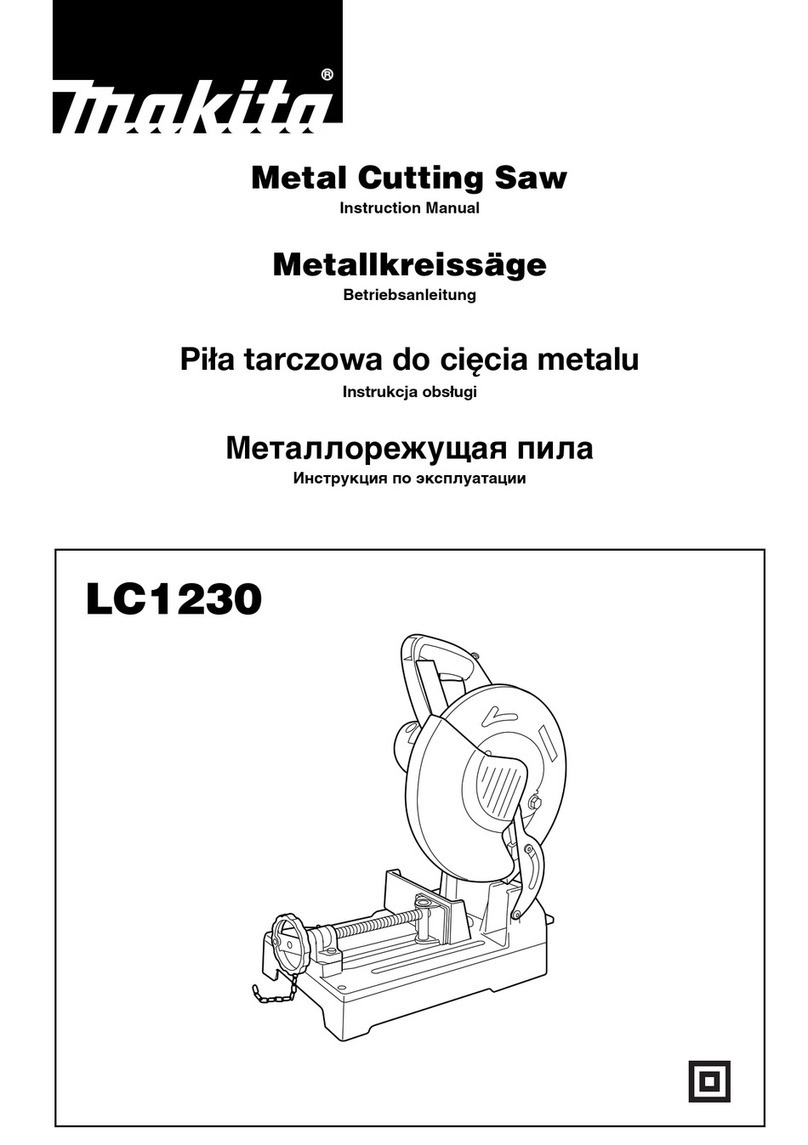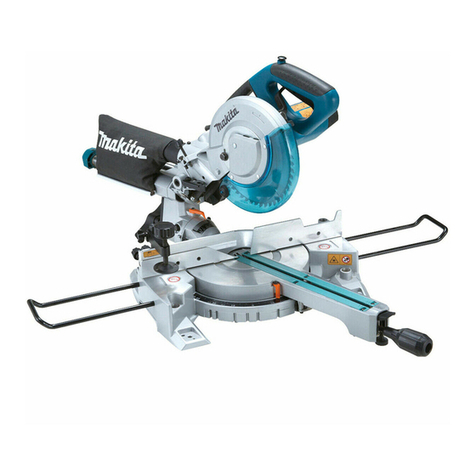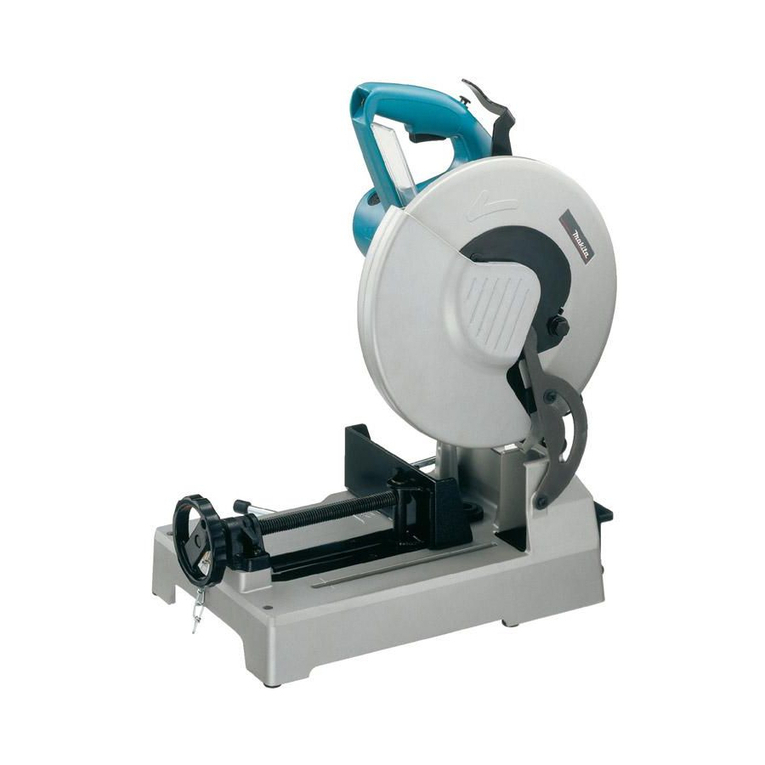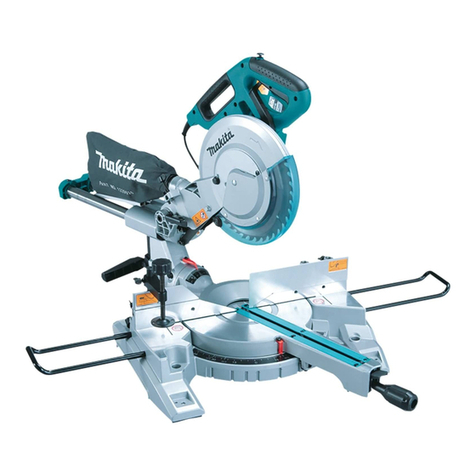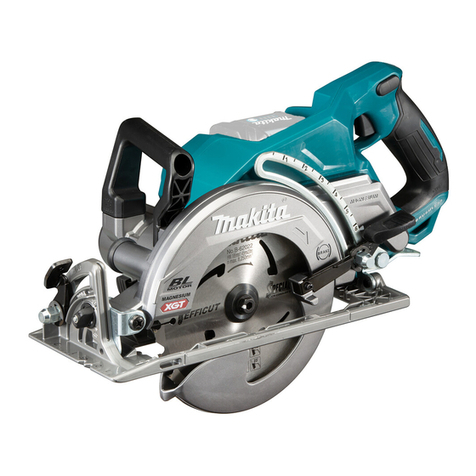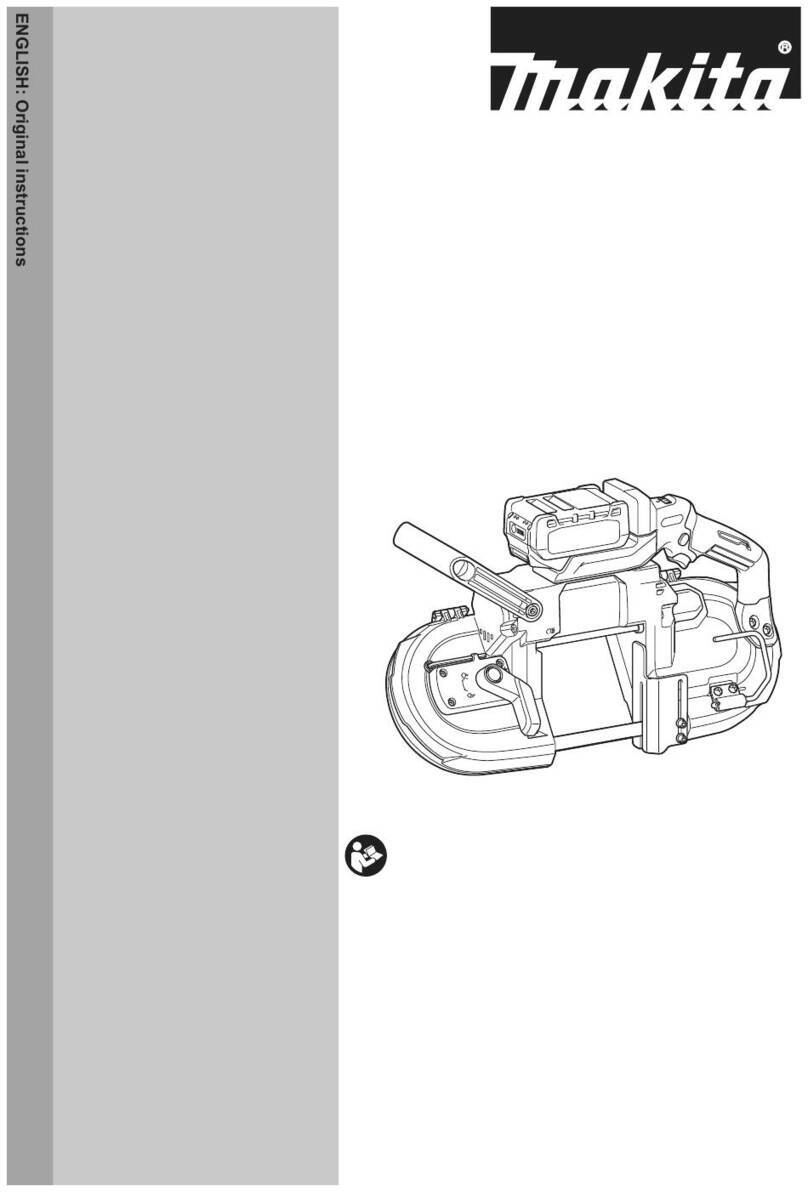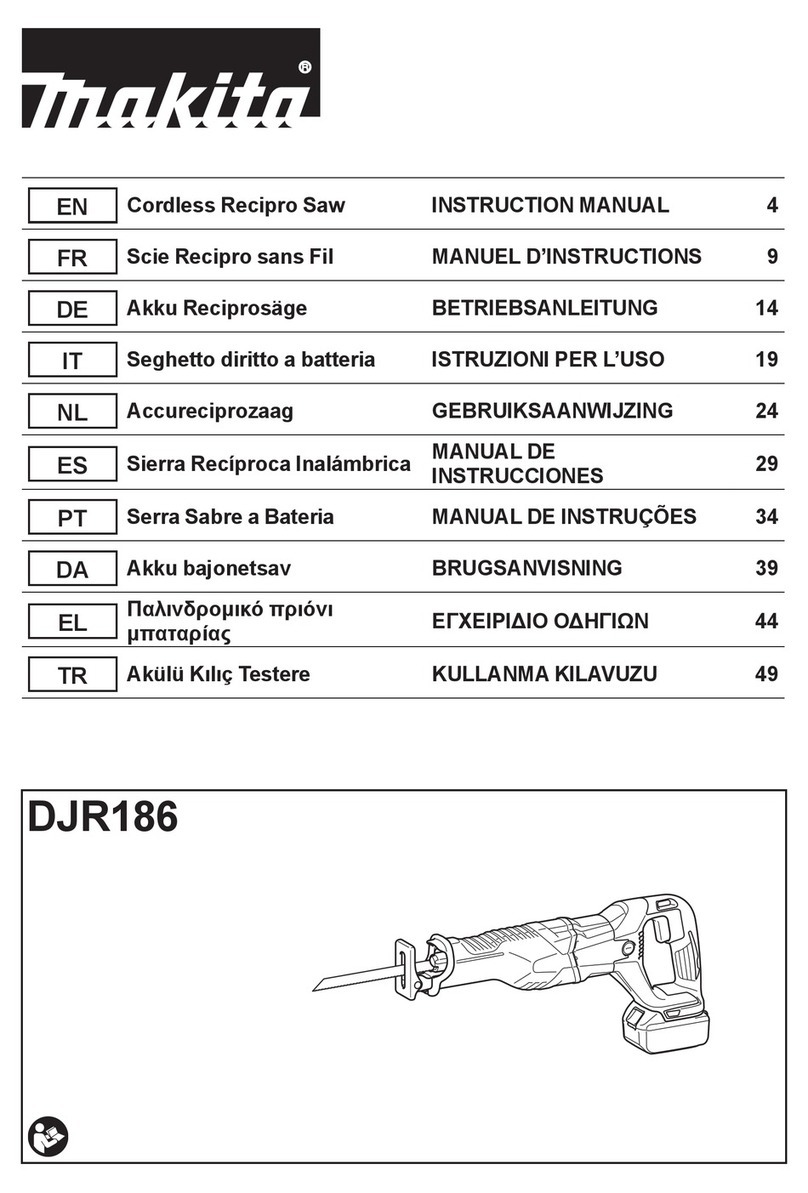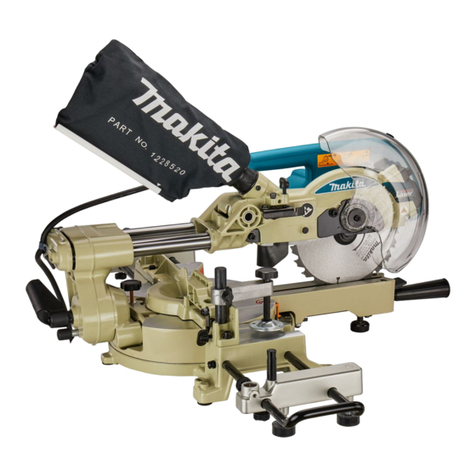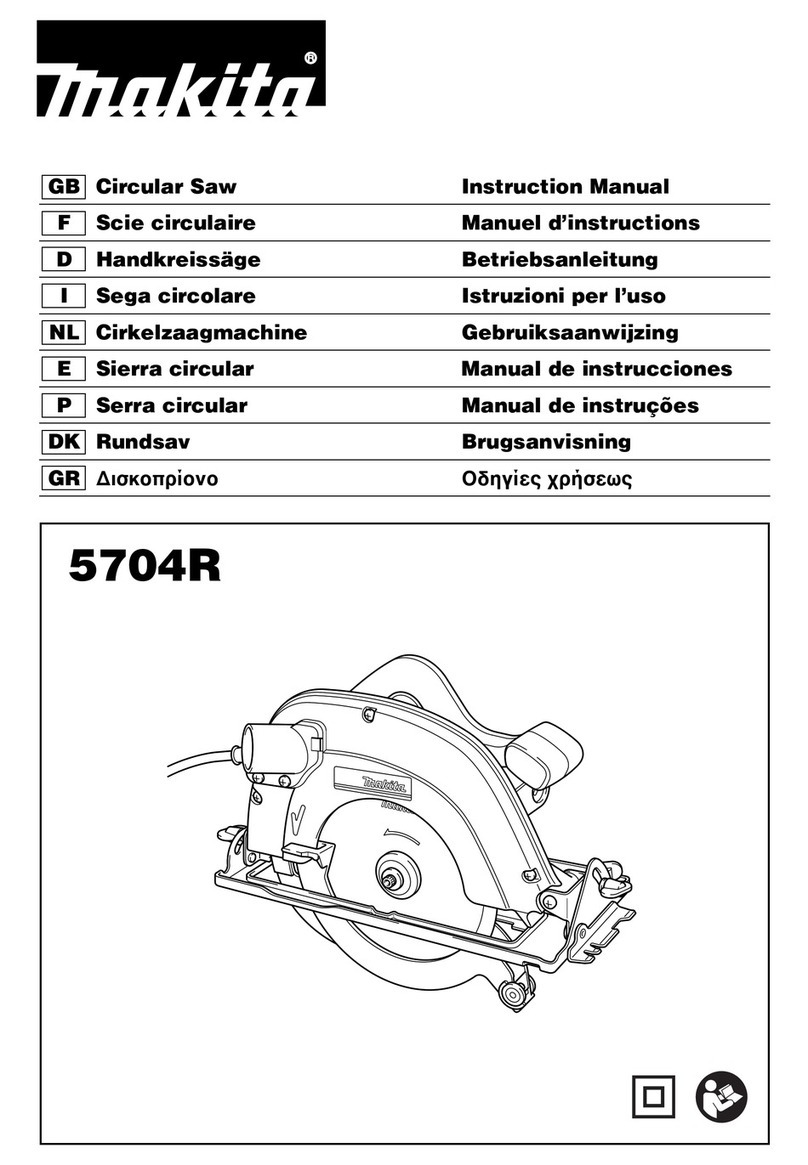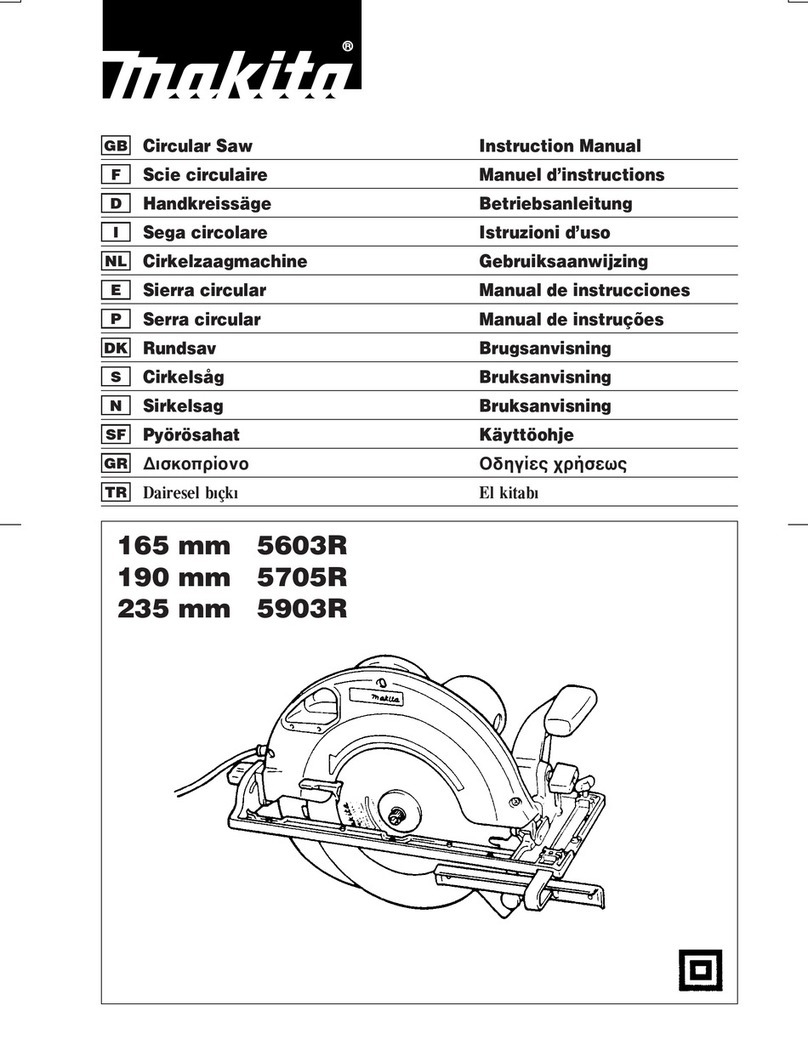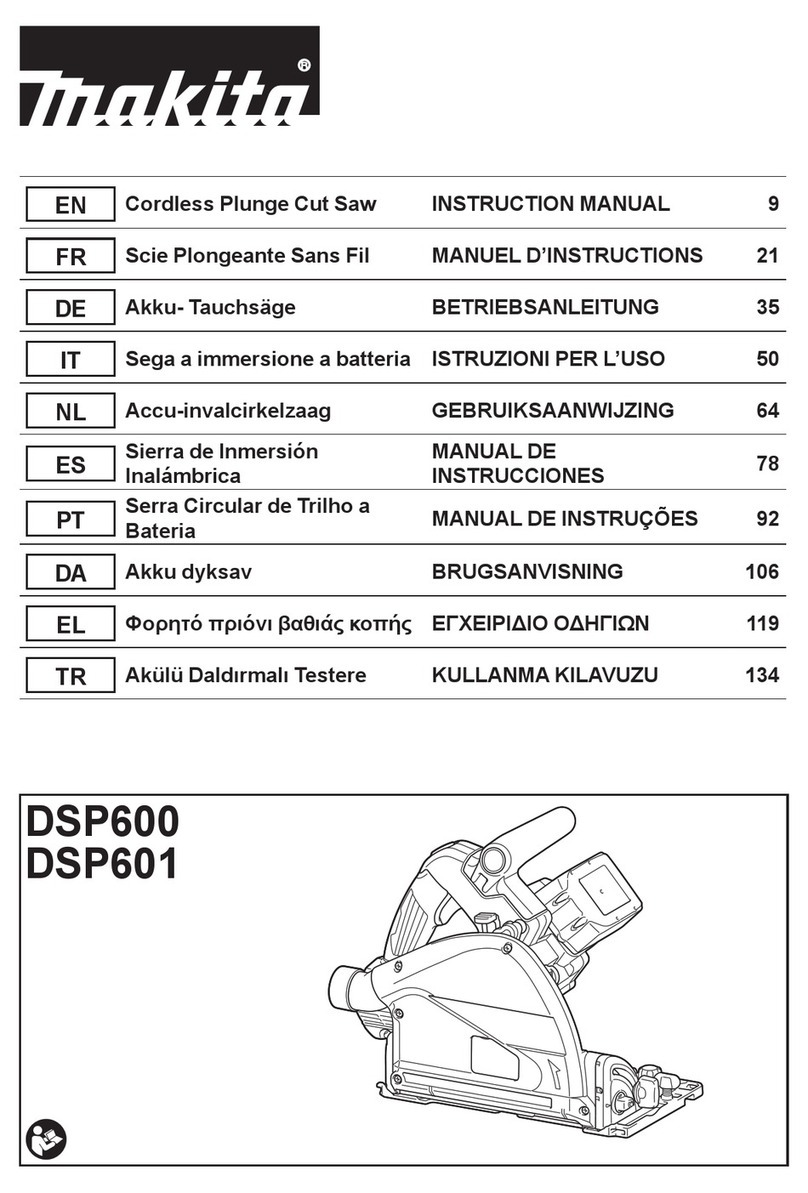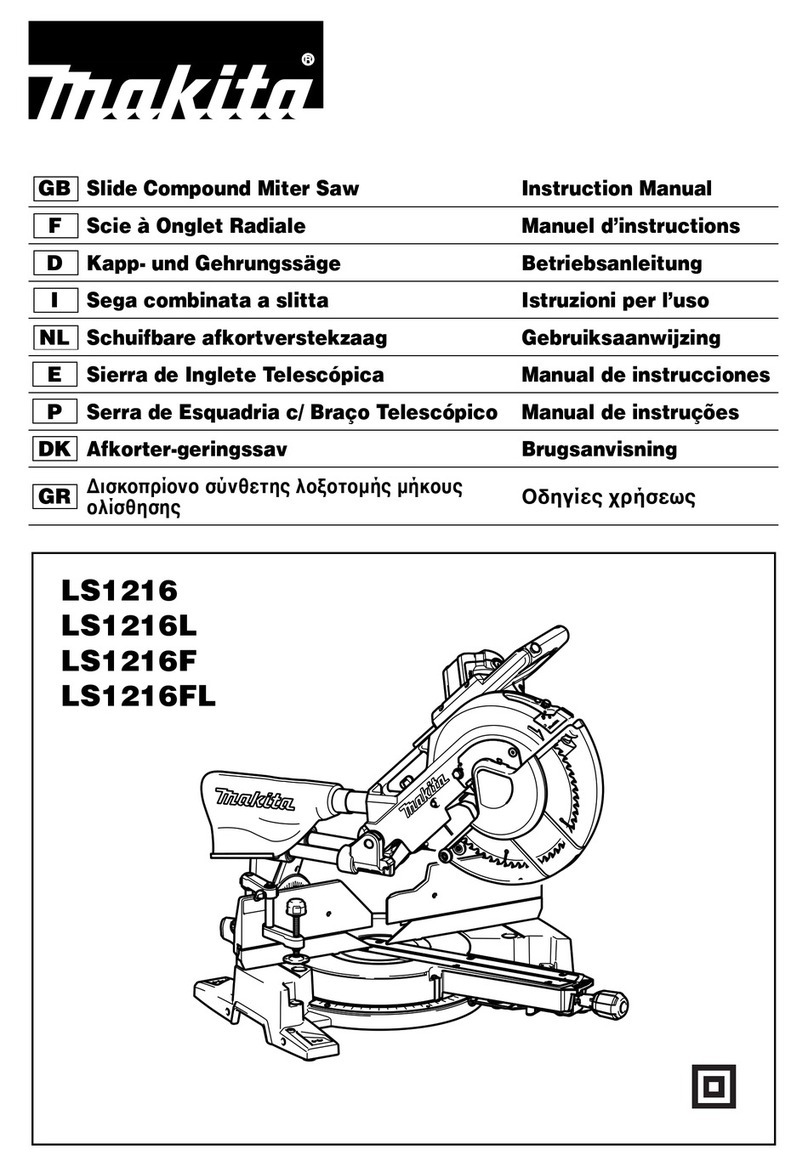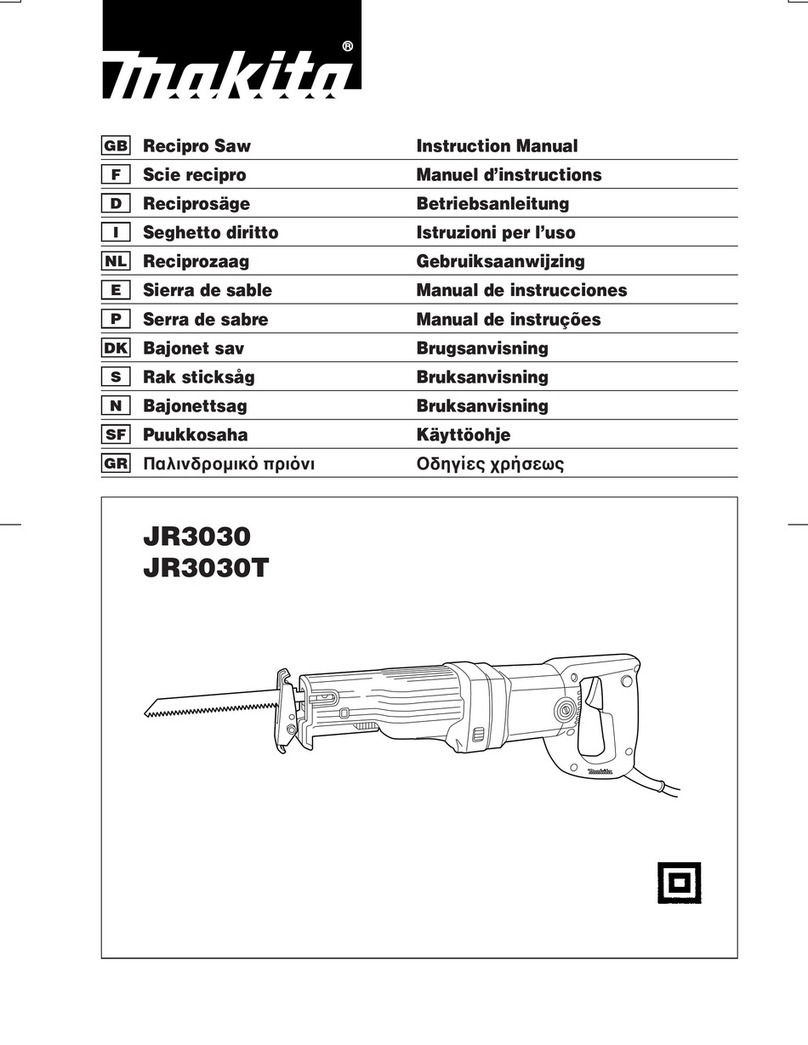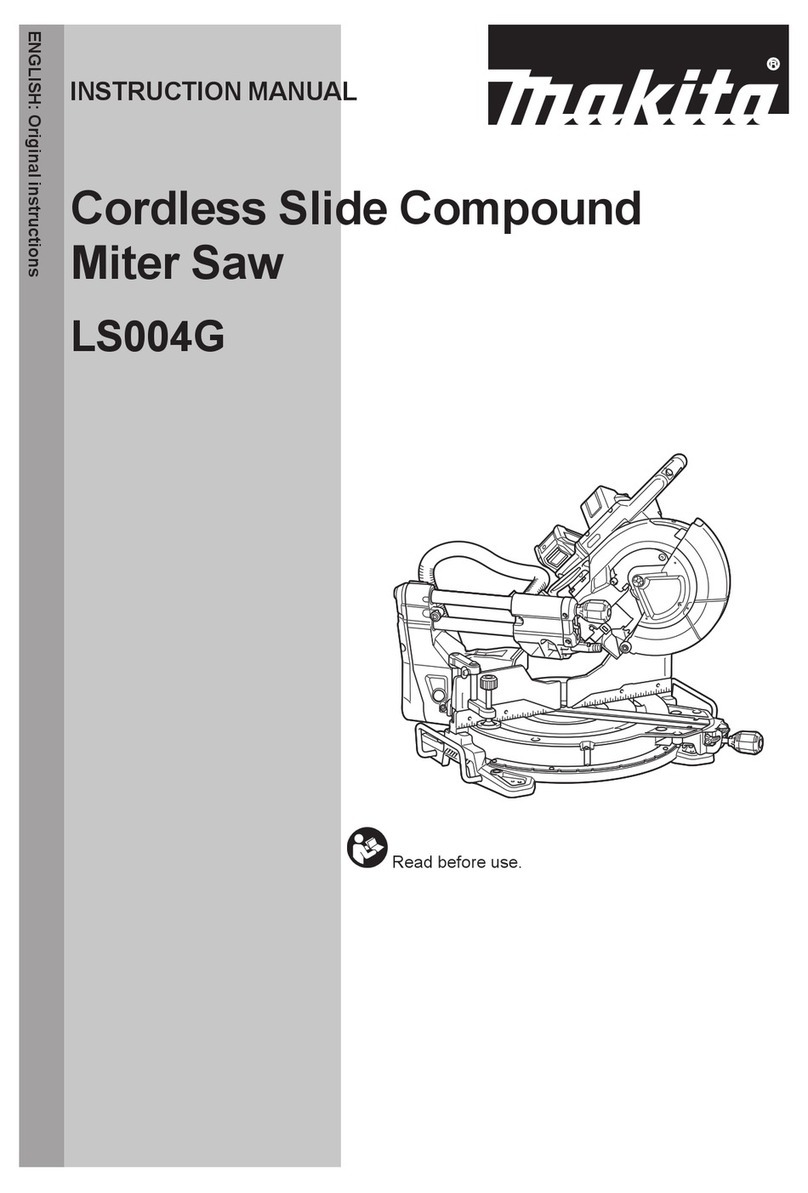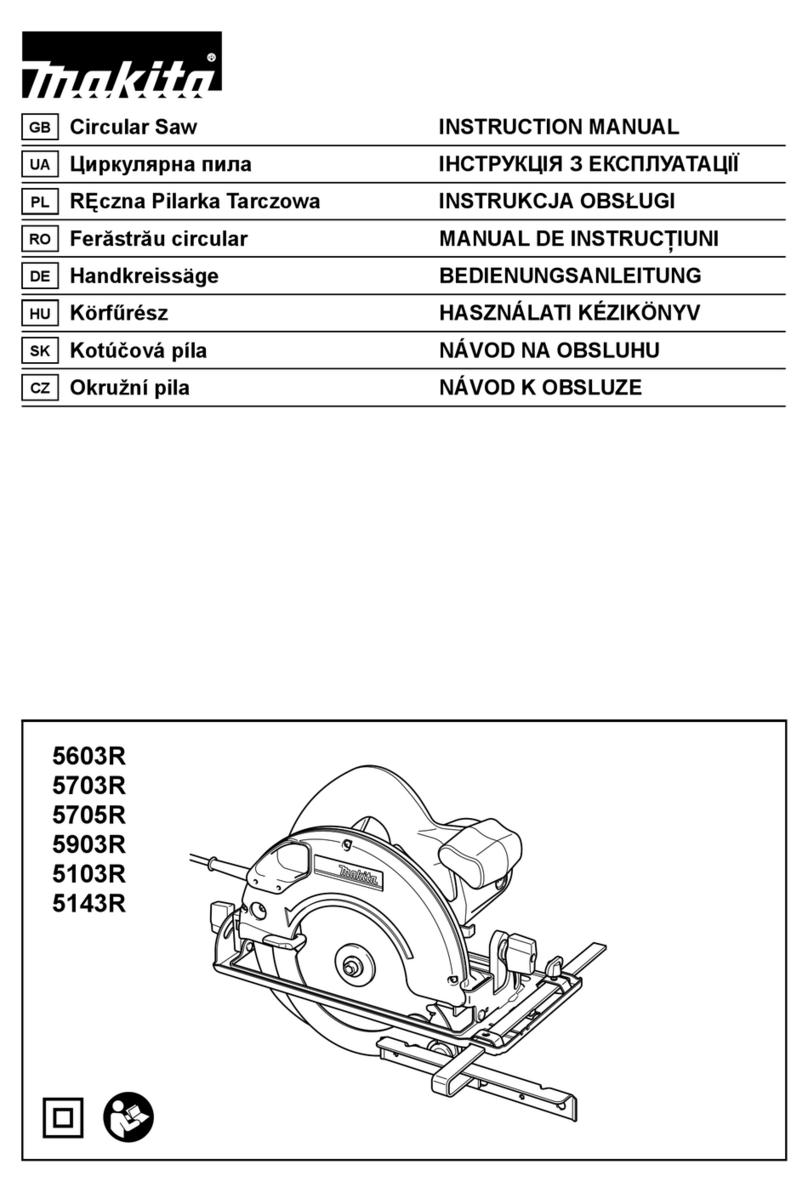
7
16. When the tool is fitted with a laser or LED, do
not replace the laser or LED with a different
type. Ask an authorized service center for repair.
17. Never remove any cut-offs or other parts of
the workpiece from the cutting area whilst the
tool is running with an unguarded saw blade.
18.
Do not perform any operation freehand.
The
workpiece must be secured firmly against the turn base
and guide fence with the vise during all operations.
Never use your hand to secure the workpiece.
19. Ensure that the tool is stable before each cut.
20. Fix the tool to a work bench, if needed.
21. Support long workpieces with appropriate
additional supports.
22.
Never cut so small workpiece which cannot be
securely held by the vise.
Improperly held workpiece
may cause kickback and serious personal injury.
23. Never reach around saw blade.
24.
Turn off tool and wait for saw blade to stop before
moving workpiece or changing settings.
25.
Unplug tool before changing blade or servicing.
26. Stopper pin which locks the cutter head down
is for carrying and storage purposes only and
not for any cutting operations.
27.
Do not use the tool in the presence of flammable
liquids or gases.
The electrical operation of the tool
could create an explosion and fire when exposed to
flammable liquids or gases.
28. Use only flanges specified for this tool.
29.
Be careful not to damage the arbor, flanges
(especially the installing surface) or bolt. Damage
to these parts could result in blade breakage.
30. Make sure that the turn base is properly
secured so it will not move during operation.
31.
For your safety, remove the chips, small pieces,
etc. from the table top before operation.
32. Avoid cutting nails. Inspect for and remove all
nails from the workpiece before operation.
33. Make sure the shaft lock is released before
the switch is turned on.
34. Be sure that the blade does not contact the
turn base in the lowest position.
35. Hold the handle firmly. Be aware that the saw
moves up or down slightly during start-up and
stopping.
36. Make sure the blade is not contacting the
workpiece before the switch is turned on.
37. Before using the tool on an actual workpiece,
let it run for a while. Watch for vibration or
wobbling that could indicate poor installation
or a poorly balanced blade.
38. Wait until the blade attains full speed before
cutting.
39. Stop operation immediately if you notice
anything abnormal.
40.
Do not attempt to lock the trigger in the on position.
41. Be alert at all times, especially during
repetitive, monotonous operations. Do not be
lulled into a false sense of security. Blades
are extremely unforgiving.
42. Always use accessories recommended in this
manual. Use of improper accessories such as
abrasive wheels may cause an injury.
43. Take care when slotting.
44. Some dust created from operation contains
chemicals known to cause cancer, birth
defects or other reproductive harm. Some
examples of these chemicals are:
• lead from lead-based-painted material and,
•
arsenic and chromium from chemically-
treated lumber.
Your risk from these exposures varies,
depending on how often you do this type of
work. To reduce your exposure to these
chemicals: work in a well ventilated area and
work with approved safety equipment, such
as those dust masks that are specially
designed to filter out microscopic particles.
45. To reduce the emitted noise, always be sure
that the blade is sharp and clean.
46. The operator is adequately trained in the use,
adjustment and operation of the machine.
SAVE THESE INSTRUCTIONS.
WARNING:
DO NOT let comfort or familiarity with product (gained
from repeated use) replace strict adherence to safety
rules for the subject product. MISUSE or failure to
follow the safety rules stated in this instruction manual
may cause serious personal injury.
INSTALLATION
Fig.1
Fig.2
When the tool is shipped, the handle is locked in the
lowered position by the stopper pin. Loosen the bolt with
a wrench provided with the tool and move the saw head
to the right angle. Remove the bolt and secure the saw
head with the knob.
Installing auxiliary plate
Fig.3
Installing the auxiliary plate using the hole in the tool's
base and secure it by tightening the screw.
Bench mounting
When the tool is shipped, the handle is locked in the
lowered position by the stopper pin. Release the stopper pin
by lowering the handle slightly and pulling the stopper pin.
Fig.4
This tool should be bolted with four bolts to a level and
stable surface using the bolt holes provided in the tool's
base. This will help prevent tipping and possible injury.
Fig.5
